-
Formula 1 in India: F1glamour show roars into town for India Grand Prix
The Indian capital is set to get a taste of F1 glitz and glamour this weekend as India hosts its first Formula One Grand Prix, with parties and events featuring global A-listers organised in New Delhi.
Topping the bill is pop star Lady Gaga, performing at an invitation-only show in a five-star hotel club after the race on Sunday.
The "Born This Way" singer, who appeared as her male alter ego during MTV's Video Music Awards in August, will perform for the first time in India in front of guests invited by the club co-owner and Bollywood actor Arjun Rampal.
Earlier this year, in an interview with Indian chat show host Simi Garewal, Lady Gaga said she would like to soak up the local culture by taking an Indian cooking class.
Also making their debut in India is heavy metal band Metallica as part of F1 Rocks, which adds an extra dash of glamour by inviting top bands to perform at some of the races.
The cheapest ticket to attend the inaugural Indian Grand Prix at the new Buddh International Circuit is 2,500 rupees (about $50). That is a bit expensive for most Indians, but affordable for the country's growing middle class and its expanding disposal incomes.
But for the after-parties that are open to all, including one that will feature a DJ set by British eighties star Boy George, locals will have to fork out at least 15,000 rupees (around $300) -- a month's salary in some Delhi households.
Bollywood stars like Shah Rukh Kahn and Hrithik Roshan are expected to be in attendance and could be joined by Hollywood big-wigs. Local media reports said Tom Cruise had been invited.
At the luxury 60-acre (25-ha) resort near the track where celebrities and F1 drivers like Michael Schumacherwill be staying, last-minute preparations were being made to ensure quirky requests are met, including one from Formula One management headed by Bernie Ecclestone to have elephants available for guests to ride.
With around 100,000 fans set to pack the stands, the atmosphere should be electric at the $400 million circuit just outside Delhi.
"Formula One is finally coming to India," said media worker Dalariti Nongpiur, 28, who paid 6,500 rupees for a ticket. "To actually hear that sound, to feel the heat of the track. I can't believe that it's actually going to happen and I'm all excited about it."
Fans are soaking up the buzz and local media has gone into overdrive this week with wall-to-wall F1 coverage.
"I'm looking forward to seeing the whole thing, the extravaganza," said Hasan Malik, 27, who is flying in from Mumbai to attend.
But not everyone is as enthusiastic and many of Delhi's 16.8 million population are not even aware that the grand prix is taking place -- people such as Kamla, a maid and mother of four.
When asked about the event, she shrugged and said her focus was enjoying her days off for Diwali, the Hindu festival of lights, which was celebrated this Wednesday.Economics of conducting a Formula One race in India
For India's Formula One racing fans, finally there may be some good news in the offing. There is increasing likelihood that Formula One may make its debut in India in 2009.
Formula One is expanding its reach in Asia. By 2010, South Korea will host a Grand Prix while Singapore would be the first to hold a night race. Among the BRIC nations, Brazil has one while China and Russia have recently joined, so its logical to India also have a F1 circuit as it is a booming economy.
In all likelihood, Delhi would be the lucky one to host the F1 race beating earlier contenders like Hyderabad, Kolkata and Bangalore. Vijay Mallya, UB Group and Kingfisher Airlines chairman is playing an active role in developing Delhi's infrastructure for the track before 2010 Commonwealth Games. Mallya also entered into a partnership with the Panasonic Toyota Formula One racing team.
Among the various proposals, the most popular is the one where track starts from Rajpath, go to the India Gate roundabout, curves into the two parallel roads that go around Rajpath, zooms in front of Vigyan Bhavan and behind Le Meridien Hotel and back to end the race at Rajpath. The track will be built on lines of Monaco running through the city.
With the Commonwealth Games coming up, the time may be ripe to build F1 track as infrastructure and airport facilities are being spruced up. This would make entire project less expensive as compared to Rs.500 crore needed for a greenfield track. Other major costs include resurfacing the entire stretch for safety of the speeding F1 cars at 350 km/hr.
The total land needed to set up track is 750 acres with the track, pits, paddocks, and stands accounting for approximately 300 acres. The land and infrastructure cost is estimated to be Rs.1500 crore. Plus, the the rights fee to Formula One Administration ranging from Rs.63 crore to Rs.210 crore.
But the returns on investment are also equally attractive. A F1 race can generate Rs.800 crore revenues and employ 10,000 people. The hotel and tourism industry also gets a boost as around 300 international flights reach the host city carrying over 3000 technicians, supporting staff and drivers apart from the 70% non-local spectators. The city can also use the infrastructure as a world-class entertainment centre for the period when races are not being held.
But the city also needs quality infrastructure of international standards to host the event. The airport should be able to handle seven large transport aircrafts like 747s simultaneously and customs should clear massive amounts of technical equipment of the teams and television rights holders in a matter of hours. The airport should be connected to the race venue with at least a six-lane expressway. Besides, the hosting city should have hotels with the 4,500 star rooms out of which 1,800 have to be of five star standards.
Given, India's rising sales growth in car sales and massive amount of advertising and marketing interest in F1 race, India could certainly leverage on the track and make Delhi a leading sport and tourist attraction.
http://www.labnol.org/india/knowledge/economics-of-conducting-a-formula-one-race-in-india/928/
Sunday, September 2, 2007
Formula One and Globalization
 I myself cannot explain why I watchFormula One, the pinnacle of motorsport and one of the most-watched sports worldwide. Anyone who has seen it can vouch for the general lack of action: overtaking is few and far between. Despite endless efforts over the years to make the sport more equitable with the introduction of grooved tires and the replacement of V10 engines with V8 ones, the sport remains dominated by a handful of big-spending teams like McLaren and Ferrari with annual budgets in the neighborhood of a mind-boggling $500 million a year.
I myself cannot explain why I watchFormula One, the pinnacle of motorsport and one of the most-watched sports worldwide. Anyone who has seen it can vouch for the general lack of action: overtaking is few and far between. Despite endless efforts over the years to make the sport more equitable with the introduction of grooved tires and the replacement of V10 engines with V8 ones, the sport remains dominated by a handful of big-spending teams like McLaren and Ferrari with annual budgets in the neighborhood of a mind-boggling $500 million a year.
Make no mistake: F1 is hideously expensive, as anyone who's tried to buy F1 paraphernalia knows. It's part sport, part marketing gimmick, part research and development, and part IPE. Europe is becoming a somewhat saturated market for F1. Whereas most races used to be held in Europe, newer races are now being held in places like Malaysia, Turkey, Bahrain, and China. In order to host these events, governments in these developing countries have splurged on creating race tracks. However, it seems that even more countries are vying for future races as F1 has proven to be quite profitable for those countries that already host them. Money talks.
The BBC is now featuring a documentary series on F1 entitled "Formula for Success." For F1 fans, it is a must-see. For everyone else, it's still fascinating for the insights it promises to make on the global business strategies of multinational sponsors, sports marketing, and globalization. By all means, catch some of the eight episodes which last 30 minutes each (you can check for viewing times on the BBC site). Now if you'll excuse me, I have to set the old VCR. Unlike F1, I'm still low-tech without a DVR. Here is the program blurb, BTW:
Formula One is a business whose product is entertainment wrapped up in the shape of cars that cost millions to produce, develop and race.It has an estimated turnover of $4bn, employs 50,000 people in more than 30 countries and has a foothold in every major economy, from the billionaire playgrounds of Europe and the Middle East to the powerhouse economies of Asia. The first episode in the new BBC World series Formula For Success looks at the money behind Formula One. The programme explores how the sport grew into a multi-billion dollar business during the 1990s on the back of an expanding global television audience. Today, the annual budget for a top Formula One team can exceed $500m – a far cry from the late 1960s when the Lotus team won the world championship on a budget of just £220,000.
http://ipezone.blogspot.com/2007/09/formula-one-and-globalization.html2011 FORMULA 1 AIRTEL GRAND PRIX OF INDIA
New Delhi
Race Date: 30 Oct 2011 Circuit Name: Buddh International Circuit Number of Laps: 60 Circuit Length: 5.125 km Race Distance: 307.249 km Lap Record: -  http://www.formula1.com/races/in_detail/india_863/
http://www.formula1.com/races/in_detail/india_863/Revving up
News Corporation and the Agnelli family may buy Formula One
May 12th 2011 | PARIS | from the print edition
 Who's in the driving seat?
Who's in the driving seat?FOLLOWING a Grand Prix is tricky. The cars are a blur. Only sharp-eyed spectators can tell which one is winning. An equally confusing race has just begun for the ownership of Formula One itself. On May 3rd News Corporation, a media group, and Exor, the Agnelli family's investment firm, announced that they were developing a plan for the business and might make an offer to CVC Capital Partners, the private-equity firm that owns it.
Exor (which owns nearly 5% of The Economist) and News Corporation are cutting in at a time of great uncertainty. An agreement which divides Formula One's profits between the commercial-rights holder and the racing teams expires at the end of 2012. Negotiations for the next one start now. The teams currently get half the operating profits before depreciation and amortisation; now they will reportedly demand as much as 80%. Bernie Ecclestone, Formula One's boss, is 80 and has no successor. He is co-operating with a German investigation into whether a bribe was paid to an executive at Bayerische Landesbank, which in 2005 agreed to sell a stake in Formula One to CVC Capital. He denies knowledge of any wrongdoing.

Formula One's business has decelerated sharply under private-equity ownership. The number of people who watch the sport on television has dropped by a tenth since 2006 (see chart). Annual ticket sales have fallen by over 15% from 3.7m in 2006 to 3.2m in 2010, according to Christian Sylt, author of Formula Money, a financial report, partly due to higher prices. Formula One fans are getting older. The sport has made little effort to woo the young. It relies on its big advertisers, such as Santander, Vodafone and LG, to market its races indirectly, spending little itself to promote the sport. America's NASCAR, in contrast, spends heavily on marketing.
Mr Ecclestone has kept money flowing in by taking Formula One into new markets in Asia and the Middle East where governments are ready to pay steep fees to hold Grand Prix races. Race-hosting fees are now the sport's biggest source of revenue, taking over from the sale of television rights. Some people close to the sport question whether this is sustainable. Because of the high fees, which go up every year, more circuits than ever are losing money. Some countries are risky: Formula One will lose a packet from the cancellation of its race in Bahrain in March. Although a shift to the east makes sense, it risks eroding the traditional core of fans in Europe, says Xander Heijnen, a consultant. France, where the first Grand Prix was held, no longer has a race after the local organiser decided it was too expensive.
A change of strategy may be required, but News Corp and Exor face hurdles in their pursuit of Formula One. Exor indirectly owns Ferrari, the sport's star team, so it could find it hard to win the backing of rival teams. News Corp operates in pay-television, whereas Formula One is currently broadcast on free-to-air TV; a shift would probably be complicated. Some people close to the sport, including Mr Ecclestone, say the two firms may have some other agenda. Could they lure teams away to form a new, rival Formula One, as Ferrari and other manufacturers have threatened to do in the past? Prepare for some wheel-to-wheel action.
India's grand prix: Sporting proud colours
Hopes that Formula 1 will share its allure with a new host country(4)
-
The business of Formula One: A motor-racing Machiavelli
Bernie Ecclestone is a canny leader for the sport(11)
-
Monitor: Formula 1 goes sailing
Performance analysis: Technology used to assess and improve the performance of racing cars is now taking to the water(7)
-
New film: "Senna": Drive fast, leave sparks
A fine portrait of a seductive man(13)
-
Seaborne telemetry: Formula 1 goes sailing
Racing-car technology takes to the water(12)
-
McLaren cars: Small is beautiful
An unusual venture has some lessons for manufacturing success in Britain(4)
-
News Corporation and the Agnelli family may buy Formula One(0)
-
Carbon-fibre composites: A high-fibre diet
A new supercar points the way to mass production with carbon composites(18)
-
VW buys into BMW's carbon-fibre dream: VW buys into BMW's carbon-fibre dream
Volkswagen buys into BMW's carbon-fibre dream(32)
-
Evolutionary machines: The Difference Engine: Darwin on the track
Why Formula One cars evolve at such break-neck speed(18)
-
Bloodhound land-speed record: How to drive at 1,000mph
The British Bloodhound team get an F1 engine for the jet and rocket in their 1,000mph car(18)
-
Tech.view: Electric cars at the crossroads: Spinning wheels
Why hybrid cars need flywheels instead of batteries(62)
-
The British car industry: Racing green
Skills learned in motorsport are driving the development of low-carbon cars(14)
-
Ron Dennis of McLaren, which launches itself as a carmaker this week, is driven by the pursuit of perfection(1)
-
Sporting comebacks: Tiger's return
How successful are sporting comebacks?(25)
-
Britain and Formula 1: Cluster champs
How racing cars built an industry(0)
-
Formula One's civil war: Mosley submits
The car firms behind the big teams have taken the wheel at the racing series(3)
-
An end to Formula One's civil war?(23)
-
Why banks sponsor sport: Play on
Banks are still packing stadiums despite the crisis(14)
-
McLaren racing cars: Speed merchants
A Formula 1 team spreads its wings(6)
-
Tech.view: Boost for Formula One
Racing cars borrow a trick from the Toyota Prius(9)
-
Does Formula One need a new formula?
A star is born, but the sport still needs a boost(22)
-
A survey of the business of sport: Go Aigo
How one Chinese company is making a name for itself(3)
-
A survey of the business of sport: Local heroes
Sporting labour markets are becoming global. But what about sports themselves?(4)
-
Are we too dependent on electronic aids?(3)
Full coverage
Formula One racing
| | This article needs additional citations for verification. Please help improve this article by adding citations to reliable sources. Unsourced material may be challenged and removed.(September 2008) |
| | This article's factual accuracy may be compromised due to out-of-date information. Please help improve the article by updating it. There may be additional information on the talk page.(November 2010) |
| This article or section may be slanted towards recent events. Please try to keep recent events in historical perspective. (September 2011) |
| Formula One |
|---|
A Formula One race or Grand Prix is a sporting event which takes place over three days (usually Friday to Sunday), with a series of practice and qualifying sessions prior to a race on Sunday.
Current regulations provide for two free practice sessions on Friday, a practice session and a qualifying session on Saturday, and the race on Sunday, though the structure of the weekend has changed numerous times over the history of the sport.
In addition to Formula One racing, other events such as races in other FIA series (such as the GP2 Series) are provided to keep crowds entertained.
Contents[hide] |
[edit]Free practice sessions
The event usually begins on Friday (except in Monaco where it begins on Thursday) with two free practice sessions, from 10:00 to 11:30 and from 14:00 to 15:30 (except in Singapore where it is 19:00 to 20:30, 21:30 to 23:00), for the drivers to learn the circuit and for the teams to experiment with their cars to figure out the best settings for the particular track. Third drivers for teams that finished outside the top four of the previous season's World Constructors' Championship are allowed to take part in Friday's free practice sessions. Another free practice session takes place on Saturday from 11:00 to 12:00 (19:00 to 20:00 in Singapore).
[edit]Qualifying sessions
On Saturday at 14:00 the qualifying session takes place to determine the running order at the beginning of the race. The qualifying hour is split into three sessions of 20, 15 and 10 minutes, with a seven-minute break between the first and second sessions and an eight-minute break between the second and third sessions. During the first session, all 24 cars run laps at any time. The seven slowest cars are assigned grid places 18 through 24. Lap times are reset for the second session, which sees the remaining 17 cars on track together. Again, the seven slowest of those cars are assigned grid places 11 through 17. The final qualifying session is a shootout among the final ten competitors to determine the final 10 grid places. The number of laps run during any session is uncontrolled.
Generally, a driver will leave the pits and drive around the track in order to get to the start/finish line (the out-lap). Having crossed the line, they will attempt to achieve the quickest time around the circuit that they can in one or more laps (the flying lap or hot lap). This is the lap time which is used in calculating grid position. Finally, the driver will continue back around the track and re-enter the pit-lane (the in-lap). However, this is merely strategy, and no teams are obligated by the rules to follow this formula.
A driver or car that sets the fastest time qualifies at the front of the grid and is said to be on pole position.
[edit]DNQ
As of 2010 only 12 teams are entered for the Formula One World Championship, each entering two cars for a total of 24 cars, while the regulations place a limit of 26 entries for the championship. At some periods in the history of Formula One the number of cars entered for each race has exceeded the number permitted, which historically would vary from race to race according to the circuit used. Monaco, for example, for many years allowed only 20 cars to compete because of the restricted space available. The slowest cars excess to the circuit limit would not qualify for the race and would be list as 'Did not Qualify' (DNQ) in race results.
[edit]Pre-qualifying
In the late 1980s and early 1990s the number of cars attempting to enter each race was as high as 39 for some races. Because of the dangers of having so many cars on the track at the same time, a pre-qualifying session was introduced for the teams with the worst record over the previous 6 months, including all new teams. Only the four fastest cars from this session were then allowed into the qualifying session proper, where 30 cars competed for 26 places on the starting grid for the race. The slowest cars from the pre-qualifying session were listed in race results as 'Did Not Pre-Qualify' (DNPQ). Pre-qualifying was discontinued after 1992 when many small teams withdrew from the sport.
[edit]107% rule
As the number of cars entered in the world championship fell below 26, a situation arose in which any car entered would automatically qualify for the race, no matter how slowly it had been driven. The 107% rule was introduced in 1996 to prevent completely uncompetitive cars being entered in the championship. If a car's qualifying time was not within 107% of the pole sitter's time, that car would not qualify for the race, unless at the discretion of the race stewards for a situation such as a rain affected qualifying session. The 107% rule was removed since the FIA's rules indicated previously that 24 cars can take the start of an F1 race, and a minimum of 20 cars must enter a race. For 2003 the qualifying procedure changed to a single-lap system, rendering the rule inoperable. However, there were concerns about the pace of the new teams in the 2010 season. As the qualifying procedure had been changed since the 2006 season to a 3 part knockout system, the rule could now be reintroduced. As such, the 107% rule has been reintroduced for the 2011 F1 season. Currently, cars have to be within 107% of the fastest Q1 time in order to qualify for the race.[1]
[edit]Race
- See Formula One regulations for detailed information on the race start procedure.
The race itself is held on Sunday afternoon. Thirty minutes prior to race time, the cars take to the track for any number of warm-up laps, after which the cars are assembled on the starting grid in the order they qualified. At the hour of the race, a green light signifies the beginning of the relatively slow formation lap during which all cars parade around the course doing a final tire warmup and system checks. The cars then return to their assigned grid spot for the standing race start. The starting light system, which consists of five pairs of lights mounted above the start/finish line, then lights up each pair at one second intervals. Once all five pairs are illuminated, after a random length of time (one to nine seconds), the red lights are turned off by the race director, at which point the race starts. The race length is defined as the smallest number of complete laps that exceeds 305 kilometers (the Monaco Grand Prix is the sole exception with a race length of 78 laps / 260.5 km), though occasionally some races are truncated due to special circumstances. The race can not exceed two hours in length; if this interval is reached the race will be ended at the end of that lap.
Teams are supplied by the sole tyre supplier (currently Pirelli which replaced Bridgestone in 2011), and receive two different types of slick dry tyre compounds: Prime tyres (either Hard or Medium compounds), and Option tyres (Soft and Super-soft compounds). The Prime tyres are more durable than the Option tyres, however the Option tyres are faster than the Prime tyres (the Option tyres are said to be 1 second per lap quicker than the Prime tyres ). While the drivers who qualified 1st - 10th are required to use the tyres they qualified with to start the race; the other drivers have freedom over which tyres they can start with, which can give those who qualified in 11th and 12th place a slight advantage over those placed 9th and 10th in the race. Each driver is also required to use both types of dry compound during a dry race, and so must make a mandatory pit-stop.
Drivers used to make pitstops for fuel more than once during a race though refuelling during the race has been banned for the 2010 season. The cars, on average, get around 2 kilometres per litre (~5mpg). Timing pitstops with reference to other cars is crucial - if they are following another car but are unable to pass, driver may try to stay on the track as long as possible, as usually a car with worn tyres and low fuel load is faster than a car with new tyres and heavy fuel load.
At the end of the race, the first-, second-, and third-placed drivers take their places on a podium, where they stand as the national anthem of the race winner's home country and that of his team is played. Dignitaries from the country hosting the race then present trophies to the drivers and a constructor's trophy to a representative from the winner's team, and the winning drivers spray each other and the fans with champagne. The three drivers then go to a media room for a press conference where they answer questions in English and their native languages.
[edit]Points system
Points are awarded to drivers and teams exclusively on where they finish in a race. The winner receives 25 points, the second place finisher 18 points, with 15, 12, 10, 8, 6, 4, 2 and 1 points for positions 3 through 10. If a race has to be abandoned before 75% of the planned distance has been completed all points are halved. In a dead heat, prizes and points are added together and shared equally for all those drivers who tie. The winner of the annual championship is the driver (or team, for the Constructors' Championship) with the most points. If the number of points is the same, priority is given to the driver with more wins. If that is the same it will be decided on the most second places and so on.
Historically, the races were scored on the basis of a five-place tally: i.e. via an 8-6-4-3-2 scoring system, with the holder of the fastest race lap also receiving a bonus point. In 1961, the scoring was revised to give the winner nine points instead of eight, and the single point awarded for fastest lap was given for sixth place for the first time the previous year.
In 1991, the points system was again revised to give the victor 10 points, with all other scorers recording the same 6-4-3-2-1 result. This was thought to have been something of a knee-jerk reaction to the spate of drivers who had won the championship despite scoring fewer victories than their nearest challenger.
In 2003, the FIA again revised the scoring system to apportion points to the first eight classified finishers (a classified finisher must complete 90% of race distance) on a 10-8-6-5-4-3-2-1 basis. The winner of the world championship is the driver who accumulates the most points throughout the course of the season.
At certain periods in F1's history, the world champion has been determined by virtue of the "best 7 scores" in each "half" of the world championship, meaning that drivers have had to "discard" lower scores in either half of the season. This was done in order to equalise the footings of teams which may not have had the wherewithal to compete in all events. With the advent of the Concorde Agreements, this practice has been discontinued, though it did feature prominently in several world championships through the 1970s and 1980s.
The change in the awarding of world championship points has rendered the comparison of historical teams and drivers to current ones largely ineffective. For instance, Michael Schumacher is widely credited with being the most successful GP driver of all time. While his statistics are very impressive and easily outstrip those of his nearest competitor, it is worth noting that his points tally vs points available, and winning percentage of grands prix entered, do not significantly exceed those of Juan Manuel Fangio, whom he recently dethroned as winner of the most World Championships. As with most other sports, it is very difficult to compare stars of different eras owing to the changes in the sport and regulations.
[edit]Worldwide appeal
Despite having the highest budget in all of auto racing, Formula One racing has often been accused of being unexciting when compared to less expensive categories. The differences in driver ability are usually dwarfed when compared to the relative speed of the different makes of cars, and on-track overtaking is very rare due to the aerodynamics of trailing cars being adversely affected by the car in front (making overtaking only possible by very risky and thus rarely-taken chances, or a much faster car trailing a slower one). Also, the use of electronic driver aids such as semi-automatic gearboxes and traction control has been widely criticized by F1 fans around the globe. Traction control was banned in the 2008 Formula One season.
The sport is lesser-known in the United States than the NASCAR Sprint Cup Series or their mostly-domestic open-wheel racing series, theIndyCar Series, but in terms of budgets and global TV audiences F1 is bigger than both combined.
Estimates for Ferrari's racing budget in 1999 were around 240 million USD, and even tailender Minardi reportedly spent 50 million. Estimates of TV audiences are around 300 million per race.
[edit]External links
[edit]References
- ^ "Press Release". fia.com. Fédération Internationale de l'Automobile. 2010-06-23. Retrieved 2010-06-23.






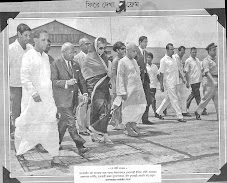



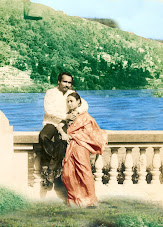






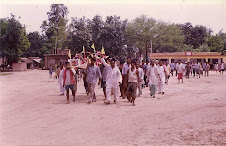

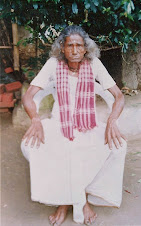
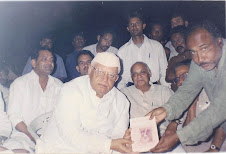
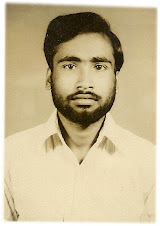



No comments:
Post a Comment